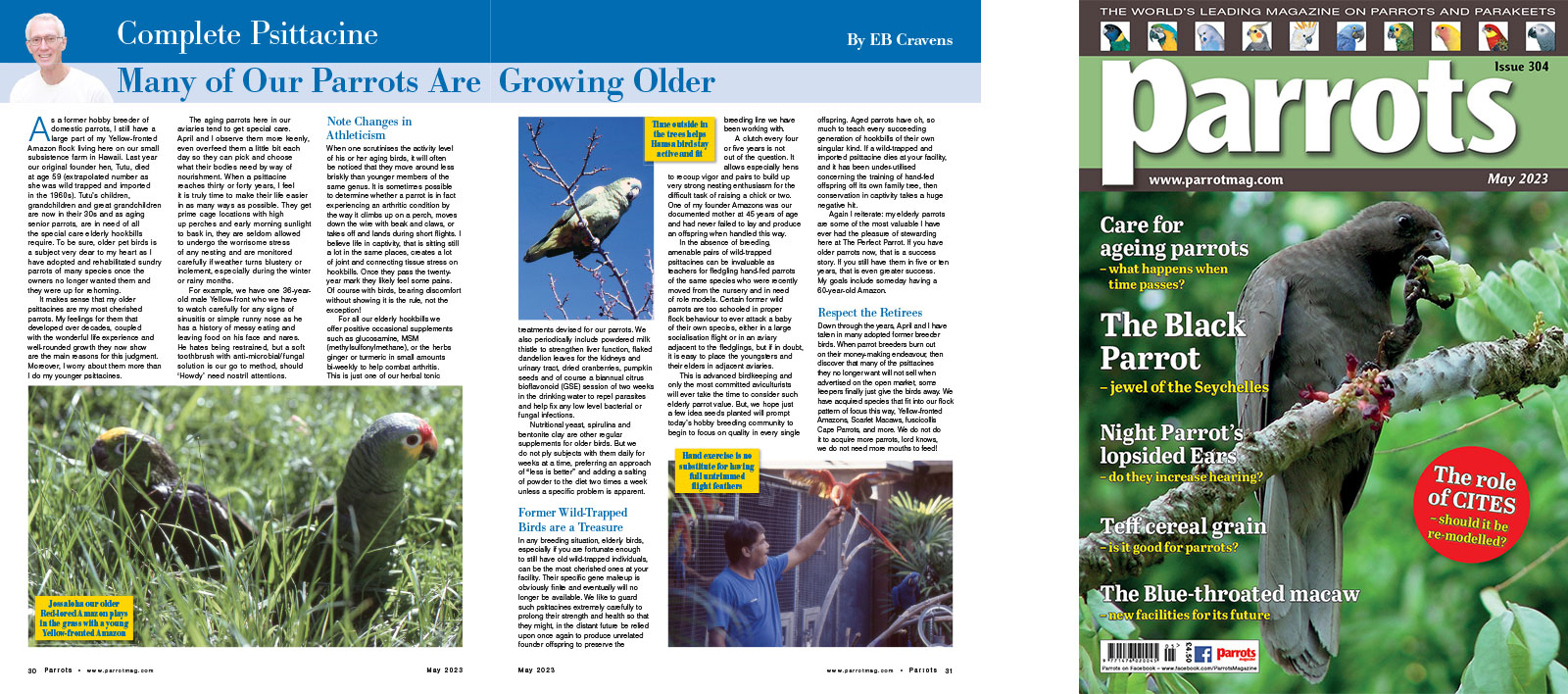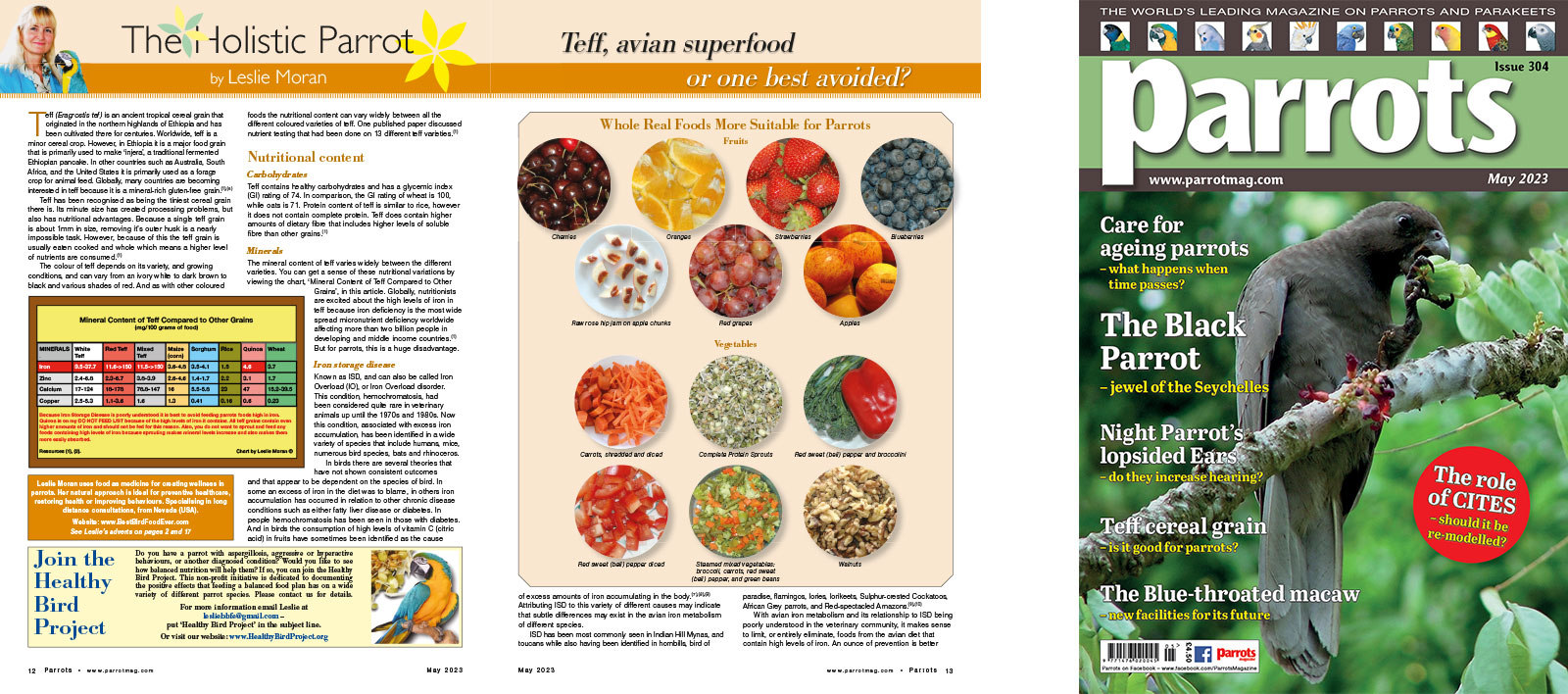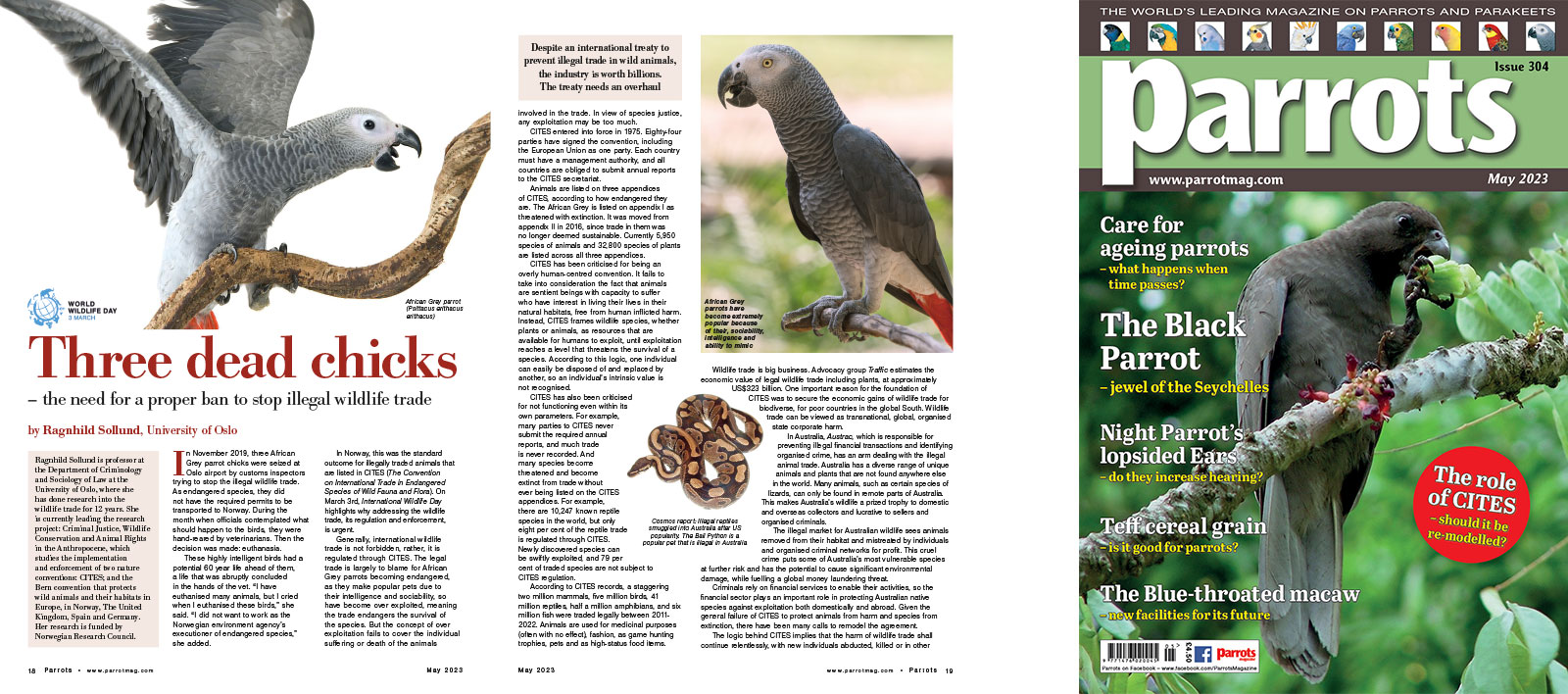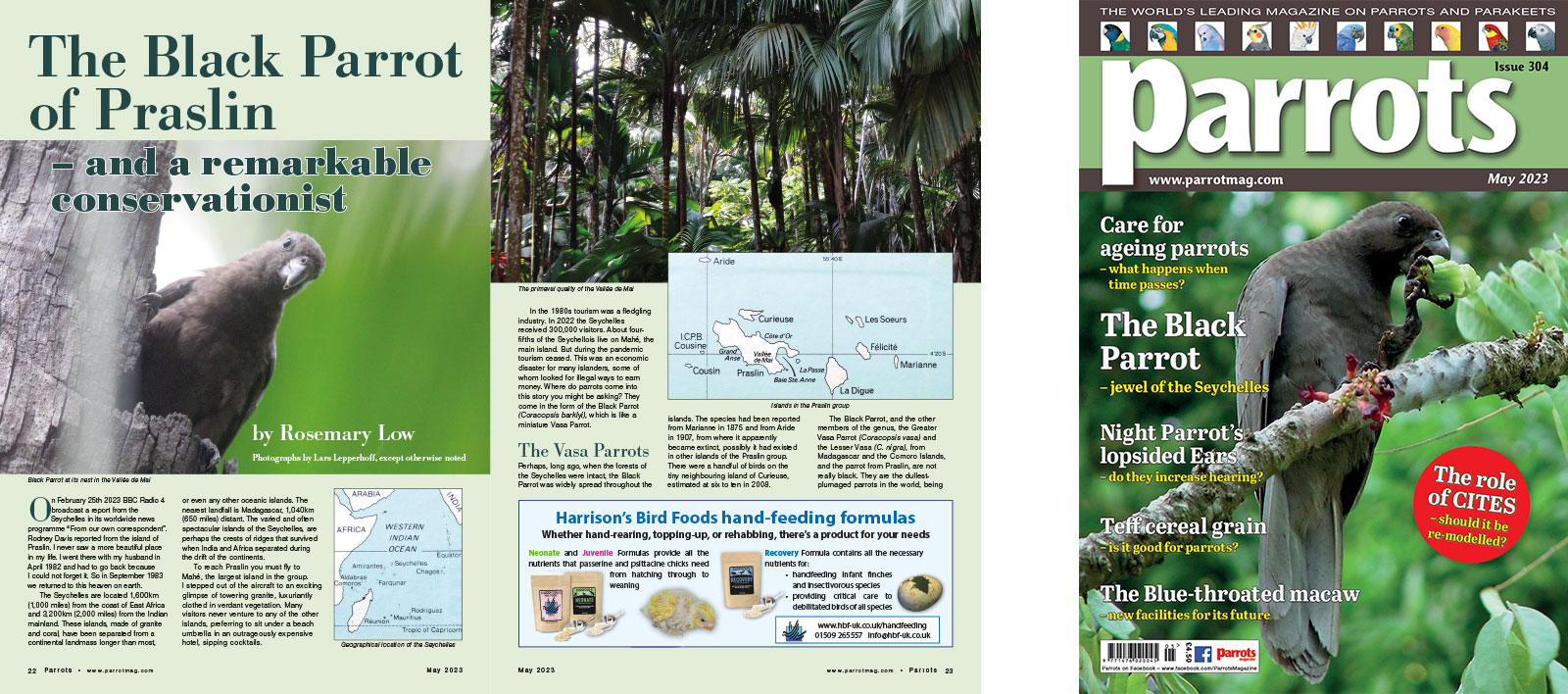
Complete Psittacine by Eb Cravens
As a former hobby breeder of domestic parrots, I still have a large part of my Yellow-fronted Amazon flock living here on our small subsistence farm in Hawaii. Last year our original founder hen, Tutu, died at age 59 (extrapolated number as she was wild trapped and imported in the 1960s). Tutu’s children, grandchildren and great grandchildren are now in their 30s and as aging senior parrots, are in need of all the special care elderly hookbills require. To be sure, older pet birds is a subject very dear to my heart as I have adopted and rehabilitated sundry parrots of many species once the owners no longer wanted them and they were up for rehoming.
It makes sense that my older psittacines are my most cherished parrots. My feelings for them that developed over decades, coupled with the wonderful life experience and well-rounded growth they now show are the main reasons for this judgment. Moreover, I worry about them more than I do my younger psittacines.
The aging parrots here in our aviaries tend to get special care. April and I observe them more keenly, even overfeed them a little bit each day so they can pick and choose what their bodies need by way of nourishment. When a psittacine reaches thirty or forty years, I feel it is truly time to make their life easier in as many ways as possible. They get prime cage locations with high up perches and early morning sunlight to bask in, they are seldom allowed to undergo the worrisome stress of any nesting and are monitored carefully if weather turns blustery or inclement, especially during the winter or rainy months.
Buy Now!

The Holistic Parrot by Leslie Moran
Teff (Eragrostis tef) is an ancient tropical cereal grain that originated in the northern highlands of Ethiopia and has been cultivated there for centuries. Worldwide, teff is a minor cereal crop. However, in Ethiopia it is a major food grain that is primarily used to make ‘injera’, a traditional fermented Ethiopian pancake. In other countries such as Australia, South Africa, and the United States it is primarily used as a forage crop for animal feed. Globally, many countries are becoming interested in teff because it is a mineral-rich gluten-free grain.
Teff has been recognised as being the tiniest cereal grain there is. Its minute size has created processing problems, but also has nutritional advantages. Because a single teff grain is about 1mm in size, removing it’s outer husk is a nearly impossible task. However, because of this the teff grain is usually eaten cooked and whole which means a higher level of nutrients are consumed.
The colour of teff depends on its variety, and growing conditions, and can vary from an ivory white to dark brown to black and various shades of red. And as with other coloured foods the nutritional content can vary widely between all the different coloured varieties of teff. One published paper discussed nutrient testing that had been done on 13 different teff varieties.
Buy Now!

By Ragnhild Sollund, University of Oslo
In November 2019, three African Grey parrot chicks were seized at Oslo airport by customs inspectors trying to stop the illegal wildlife trade. As endangered species, they did not have the required permits to be transported to Norway. During the month when officials contemplated what should happen to the birds, they were hand-reared by veterinarians. Then the decision was made: euthanasia.
These highly intelligent birds had a potential 60 year life ahead of them, a life that was abruptly concluded in the hands of the vet. “I have euthanised many animals, but I cried when I euthanised these birds,” she said. “I did not want to work as the Norwegian environment agency’s executioner of endangered species,” she added.
In Norway, this was the standard outcome for illegally traded animals that are listed in CITES (The Convention on International Trade in Endangered Species of Wild Fauna and Flora). On March 3rd, International Wildlife Day highlights why addressing the wildlife trade, its regulation and enforcement, is urgent.
Buy Now!

By Rosemary Low
On February 25th 2023 BBC Radio 4 broadcast a report from the Seychelles in its worldwide news programme “From our own correspondent”. Rodney Davis reported from the island of Praslin. I never saw a more beautiful place in my life. I went there with my husband in April 1982 and had to go back because I could not forget it. So in September 1983 we returned to this heaven on earth.
The Seychelles are located 1,600km (1,000 miles) from the coast of East Africa and 3,200km (2,000 miles) from the Indian mainland. These islands, made of granite and coral, have been separated from a continental landmass longer than most, or even any other oceanic islands. The nearest landfall is Madagascar, 1,040km (650 miles) distant. The varied and often spectacular islands of the Seychelles, are perhaps the crests of ridges that survived when India and Africa separated during the drift of the continents.
To reach Praslin you must fly to Mahé, the largest island in the group. I stepped out of the aircraft to an exciting glimpse of towering granite, luxuriantly clothed in verdant vegetation. Many visitors never venture to any of the other islands, preferring to sit under a beach umbrella in an outrageously expensive hotel, sipping cocktails.
Buy Now!




